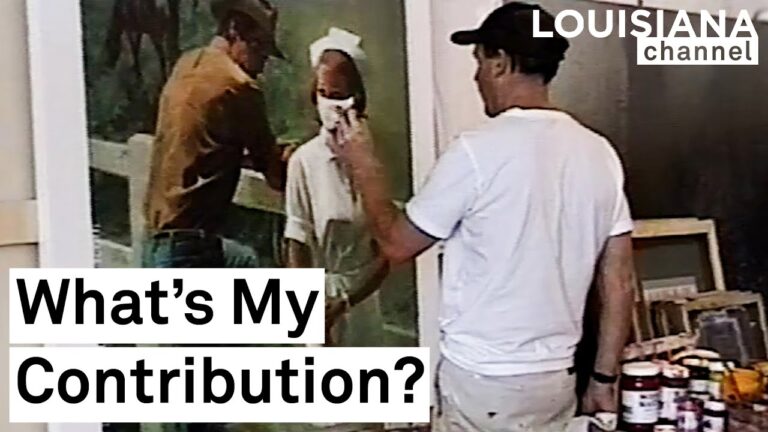
“I wanted to be independent. I wanted to make something that hadn’t been made. I wanted to see something that hadn’t been seen.”
Louisiana Channel had the unique opportunity to visit American artist Richard Prince in his studio upstate New York. Out of it came this intimate, thoughtful and touching conversation about his life and work – including unprecedented access to Richard Prince’s personal archive.
“I am forming my own world. That’s basically what artists do.”
“Why do I have to go through the day or the world or the image world and redo it? A simple answer to that: It makes sense to me when nothing else does. The process of making art makes complete sense to me. There are not that many things that make me feel good. When I work in my studio, I can do anything I want. There is nothing I can’t do. Once you step outside, you don’t have this situation.”
Prince also reflects on the medium of photography that he became fascinated with at an early stage in life and that – in his own words – shaped him as the person he turned out to be:
“I had these weird thoughts that if I painted it, nobody would believe it. But if I photographed it, they had to believe it because it’s a photograph. Photography was associated with the truth.”
“The point was, I didn’t believe in anything, I didn’t believe in anybody, so I wanted to put something out there that could be believed. I didn’t want to put out fiction. I wanted to put out non-fiction. I wanted to take out speculation out of the art world. I didn’t want it to be interpreted or have multiple meanings. And I didn’t want to ask questions. No! Is it possible to have answers? That was my idea.”
Born in 1949 in the Panama Canal Zone, then a United States territory, Richard Prince moved to a suburb of Boston in 1954. After graduating high school in 1967, Prince made a short trip to Europe, returning to the United States to attend Nasson College, a private liberal arts college in Maine. In 1973, he moved to New York, where he became familiar with conceptual art.
While working at Time-Life in the early 1980s, Prince developed a process that resulted in grids of juxtaposed images, which he referred to as “gangs.” Here he combined multiple 35 mm slides of images from advertisements and magazines to form one larger negative, from which the final print was made. His Cowboy series, re-photographed images of the iconic Marlboro Man without any advertising text, was an early example. Each “gang” focused on a particular pop-culture motif of desire, including car hoods, bikers, pornography, cowboys, and sunsets. He also began taking his own photographs. For the series Girlfriends (1992), Prince photographed women who had appeared in biker magazines, re-creating their magazine images.
These techniques of appropriation were part of a larger movement, often referred to as the Pictures Generation, of questioning authorship, originality, and tradition. He mined stereotypes of American culture and various subcultures, selecting their most recognisable attributes and isolating them from any supporting context. In the late 1980s, Prince began painting texts of jokes against abstract, often monochromatic backgrounds. His series Nurses (2002–06) juxtaposes the famous icon of the ’50s and ’60s pulp-fiction paperbacks with elusive text cloistered within menacing abstract backgrounds.
Continuing a practice that began in the era of Andy Warhol and Pop Art, Prince’s practice of blurring the boundaries between fine art and advertisement, along with his frequent and unapologetic use of appropriation, has altered how artists understand their ownership of images. His use of visual cliches reinforced Cindy Sherman’s exploration of visual stereotypes, and his method of rephotographing influenced Sherrie Levine’s reproductions of modernist art. His brazen and unapologetic manner was an essential model for the Young British Artists (YBA), especially the work of Damien Hirst. Nearly forty years after the first stirring controversy, Prince continues to be one of the most provocative and inventive artists working today. His work has been widely exhibited and is part of the collection of leading museums worldwide.
Richard Prince was interviewed by Marc-Christoph Wagner in connection with the exhibition
Richard Prince: Same Man at the Louisiana Museum of Modern Art, Denmark. The show opened in November 2022 and is a part of the Louisiana Museum’s series On Paper. The interview took place at Richard Prince’s studio in Rensselear, New York, in June 2022.
Camera: Sean Hanley
Edited by: Jarl Therkelsen Kaldan
Produced by: Marc-Christoph Wagner
Copyright: Louisiana Channel, Louisiana Museum of Modern Art, 2022
Louisiana Channel is supported by Den A.P. Møllerske Støttefond, Ny Carlsbergfondet, C.L. Davids Fond og Samling and Fritz Hansen.
#RichardPrince #Artist
Subscribe to our channel for more videos on art: https://www.youtube.com/thelouisianachannel
source